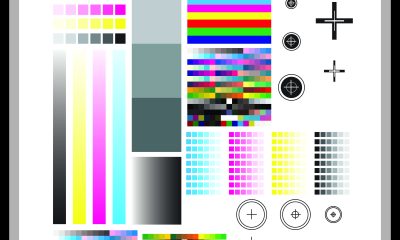Writing an article is an adventure. You start out with a defined plan with predictable results and always end up finding a morass of unexpected gems of common sense along the way. Writing “Ink Mixing and Matching: Tools of the Trade for Screen Printers” for this issue of Screen Printing was a great example of this type of adventure.
Writing an article is an adventure. You start out with a defined plan with predictable results and always end up finding a morass of unexpected gems of common sense along the way. Writing “Ink Mixing and Matching: Tools of the Trade for Screen Printers” for this issue of Screen Printing was a great example of this type of adventure.
When the process began, I was just gathering facts. “What’s the most difficult task in creating custom ink colors?” I asked every expert I could find. Jon Fultz of FUJIFILM Sericol USA gave me some good answers. The substrate is a color, he began. “Squeegee and pressure also impact the final color of a print.”
Amy Saylor, operations manager at Flourtown, PA-based Motson Graphics, Inc. gave me a few insights into their printing operations too. “Here at Motson, we find our best resource for color matching is the human eye and more than 50 years of experience. Our customers ask us to match standards such as Pantone, Federal Standard 595, RAL, Munsell, as well as custom colors and gloss. We are often asked to
go beyond the tolerance of the standard practice of color matching.”
At Motson, Saylor uses internal documentation systems, recorded mixing instructions, special notes, and a color chip. The chip ensures a visual match when new batches of ink necessitate a rematch of the color. They maintain an inventory of a wide range of bases, tints, and resins.
Advertisement
Motson’s visual matches are verified with a spectrophotometer along with a densitometer for verifying backlit colors. “We measure color, brightness, opacity, and/or transmission. Lighted colors may simply be a specific density for maintaining brightness or as complicated as controlling the chromaticity for items used in aircraft instrumentation,” she says. She uses a gloss meter to check gloss level. A chemical engineer at the company tests and confirms adhesion to a wide range of substrates.
There’s a list of companies within the article that told me about their own particular tools for color matching, including software programs, scales, dispensers, and materials-control programs to prevent ink waste. And within my notes are names of unwritten heroes who gave me an education about color matching.
Morgan Young from the Lancer Group in Canada explained how the equipment worked. Marabu’s Friedrich Goldner explained that when using a shade from the Pantone book, “one must remember that the reference is being offset printed and that it needs to be translated into screen printing.”
Kent Hudson and Juke Leman of International Coatings Co. taught me about special bases and additives for changing the look and feel of printed garments and making puff, suede, stretch, glitter, granite, and soft-feel products. Tony Chapman at Rutland sent photos and answers. Jonny Shell at SGIA helped me track down experts in the field. What wonderful advisors!
As I finished the article, I thought of a Garrison Keillor observation from one episode of Prairie Home Companion on NPR: “Kindness is a constant presence in America.” Kindness remains unlimited by national boundaries though. My experts came from around the globe. I would like to thank all the kind participants who shared their knowledge of color matching to help me pass it on.

 Case Studies2 months ago
Case Studies2 months ago
 Art, Ad, or Alchemy2 months ago
Art, Ad, or Alchemy2 months ago
 Andy MacDougall2 months ago
Andy MacDougall2 months ago
 Columns3 weeks ago
Columns3 weeks ago
 Editor's Note3 weeks ago
Editor's Note3 weeks ago
 Marshall Atkinson3 weeks ago
Marshall Atkinson3 weeks ago
 Thomas Trimingham2 months ago
Thomas Trimingham2 months ago
 News & Trends2 months ago
News & Trends2 months ago
















